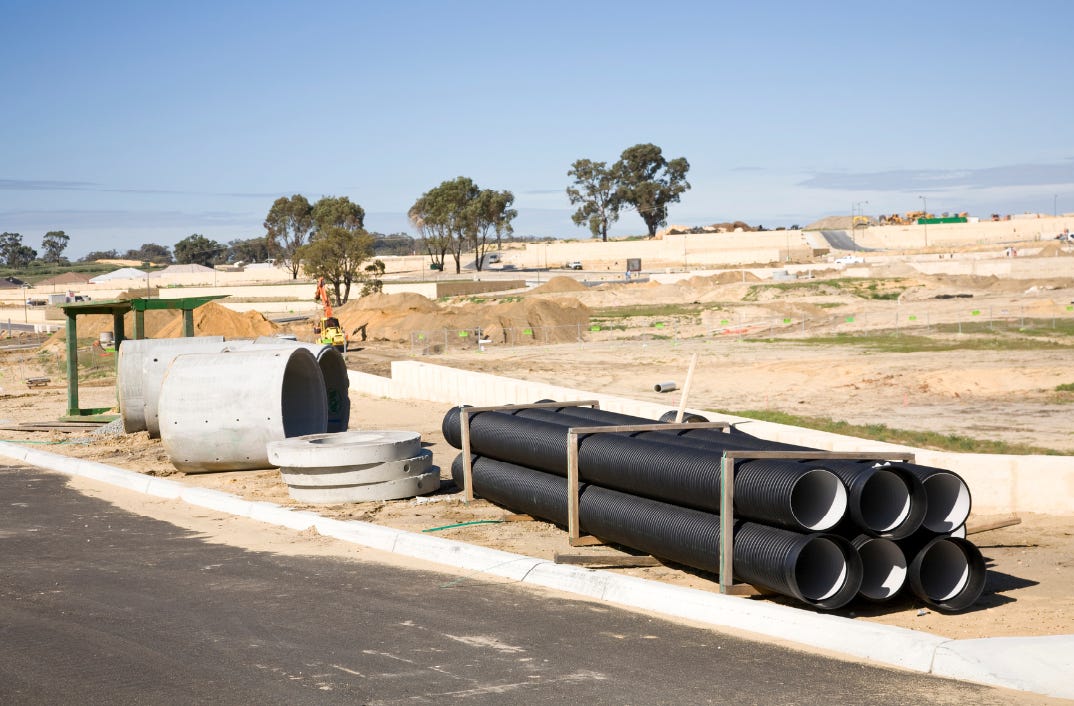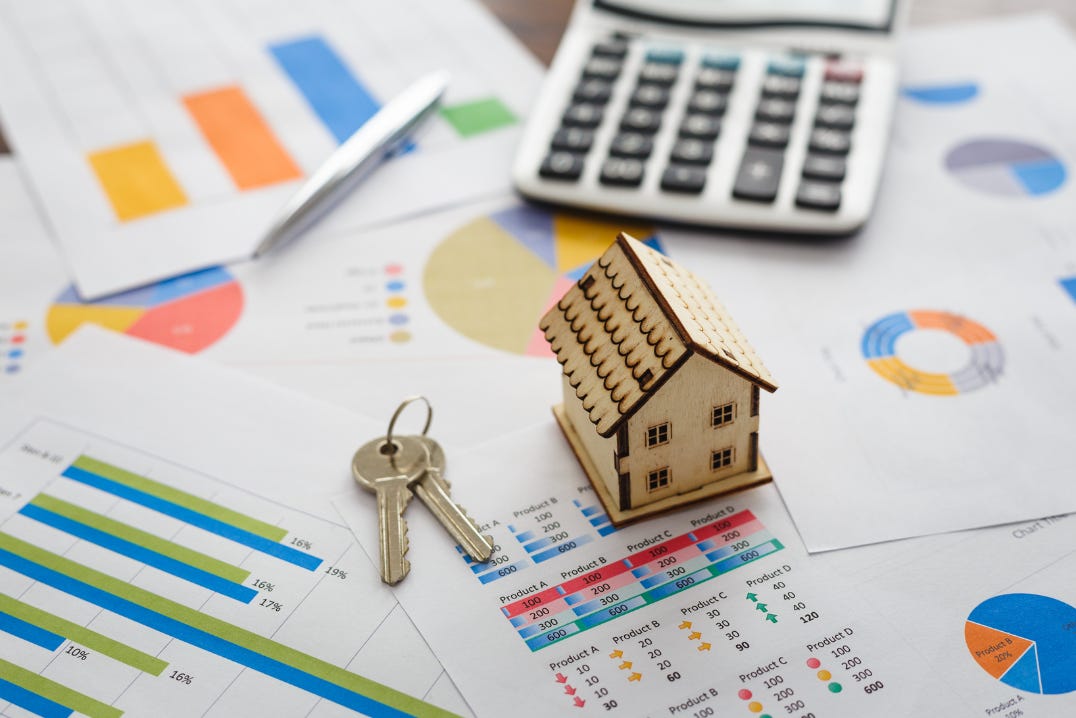Groundswell Property's Market Insights
Optimism Rises as Regional Trends Shift, Million-Dollar Median Now in Five Cities, Construction Slows and Rents Surge: Key Insights as at 26 April 2025
Welcome to this week’s edition of Groundswell Property’s Market Insights, where we cut through the media noise and deliver real, data-driven updates on Australia’s ever-changing property market.
Image source: Luisa Denu, Unsplash
While new home construction hits decade lows, optimism is building around policy reforms and interest rate cuts. Meanwhile, Australia’s internal migration patterns continue to evolve, housing prices edge higher, and renters face fresh pressures.
🔑 Key Takeaways:
🏗️ Construction slowdown: Home starts plunge to 168,000 in 2024, but industry optimism remains strong
🛤️ Regional rebalancing: Coastal lifestyle areas boom as inland towns lose younger populations
📈 Listings rise, prices lift: Buyer confidence returns following the RBA’s February rate cut
💰 Million-dollar club expands: Adelaide joins Sydney, Melbourne, Brisbane, and Canberra with a $1M+ median house price
📊 Rent surge reignites: National rents jump 1.6% in Q1 2025, led by apartment growth
As always, our goal is to provide evidence-based insights to help you make informed property decisions—whether you're buying, selling, or simply keeping a pulse on the market. Let’s dive into the data and insights shaping the year ahead.
Optimism Builds Despite Construction Slowdown
New home construction may be at a decade low, but the Housing Industry Association (HIA) remains optimistic that policy changes can reignite growth and meet national housing targets.
Just 168,050 homes began construction in 2024, well below the annual 250,000 needed to hit the government’s 1.2 million homes goal by 2029. However, HIA Chief Economist Tim Reardon believes the tide can turn with the right reforms.
“We’re at the bottom of the cycle, but with the right support and smart policy, the recovery will come,” Mr Reardon said. “Demand remains strong, and we need to ensure the industry is ready when interest rates ease.”
HIA is calling for ‘easy-good’ solutions like waiving mortgage insurance and targeted incentives for first-home buyers to build rather than buy established homes. Long-term reforms around land supply, planning, and infrastructure are also key.
Reardon adds, “If sustained, these changes will help ease affordability pressures and unlock future housing supply.”
Rethinking Regional Population Growth
New modelling reveals Australia faces significant demographic challenges, with inland areas losing population while coastal lifestyle regions boom. Between 2014 and 2024, Australia added 3.7 million people, mostly to major cities and coastal towns, according to Bernard Salt and data scientist Hari Hara Priya Kannan.
The trend is set to continue, with a projected 3.6 million more people by 2035—driven by retirees moving into regional areas and young people leaving smaller towns for cities. In places like Horsham and Charters Towers, ageing populations are rising while younger cohorts decline.
Salt warns that this shift will strain local services unless action is taken: “We need a national demographic audit to identify where the greatest shortages of essential workers will emerge—and act on it.”
Meanwhile, growth hotspots like Wyndham and the Gold Coast will require rapid infrastructure investment to meet soaring demand. With targeted planning and workforce distribution, Australia can better manage these emerging pressures across both growing and contracting communities.
Listings Rise, Prices Lift
Australia’s housing market is showing fresh momentum, with falling interest rates boosting buyer confidence and listings. NAB executive Denton Pugh says the sector has “reached a turning point” following the RBA’s February rate cut, with further reductions expected. “This isn’t a boom, but the tone has changed,” he said, citing a rise in first-home buyer and upgrader activity.
March saw national home prices lift 0.4%, with gains strongest in Darwin, Adelaide, and Brisbane. Listings rose 6.1% year-on-year, led by Sydney and Perth. REA’s Angus Moore noted that lower borrowing costs and rising prices were encouraging sellers back into the market.
Despite renewed activity, affordability and supply issues persist. PropTrack data shows modest national growth of 0.3% in March, with Sydney and Canberra leading. REA economist Eleanor Creagh expects steady, measured growth to continue.
Meanwhile, debate continues over Labor’s proposal to expand the First Home Guarantee Scheme. Critics warn it may fuel demand without solving supply, while supporters say it could ease deposit barriers for younger buyers.
Million-Dollar Median Now in Five Cities
Adelaide has officially joined Sydney, Melbourne, Brisbane, and Canberra as the fifth Australian capital city with a median house price above $1 million, according to Domain’s March House Price Report. Adelaide’s median now sits at $1,000,202.
While house prices continue to climb, growth has slowed to a third of last year’s pace. Supply is improving in cities like Brisbane, Perth and Adelaide, but not enough to ease pressure nationwide.
Domain’s Chief of Research, Dr Nicola Powell, said, “It’s a good thing supply is rising, but that doesn’t mean we still don’t have a housing crisis.”
She added that with increased listings and interest rate cuts expected, now could be an opportune time to buy.
National rents remain high, averaging $650 per week. Sydney continues to top the list, with renters paying $9100 more annually than those in Melbourne.
Canberra, meanwhile, saw the smallest rent increases in early 2025, offering some relief after a steep rise at the end of 2024.
Rent Surge Returns in Early 2025
After slowing late last year, rent prices have surged again, with PropTrack reporting a 1.6% rise in the March 2025 quarter. The national median weekly rent now sits at $630, up 5% from a year ago—adding around $1,560 annually for tenants.
REA Group economist Anne Flaherty said, “The speed at which rents are rising has picked up... reversing the trend of slowing growth seen late last year.”
Apartments are leading the increase, with unit rents rising 3.2% in capitals and 3% in regions, compared to modest growth for houses.
Capital cities, particularly Queensland and South Australia, drove the national increase. Sydney remains the most expensive, with renters paying $70 more per week than those in Perth—and $9,100 more annually than in Melbourne.
Despite recent momentum, Flaherty expects “a more modest pace of rent growth” through the rest of 2025, though affordability remains a growing concern as rents have surged 14.2% in two years—well above inflation.
Key Takeaways
Momentum is quietly building across Australia’s property markets despite ongoing affordability pressures.
New home construction may have stalled, but industry leaders like the HIA remain confident that targeted policy changes, smart incentives, and easing interest rates will reignite growth.
Meanwhile, regional demographic shifts are reshaping where people want—and can afford—to live, placing new pressures on both infrastructure and local economies. Listings are rising, prices are firming, and investor sentiment is starting to turn more positive.
However, rental affordability remains a major challenge, with national rents rising sharply again after a brief slowdown in late 2024.
We’ll continue tracking the data and delivering the insights that matter most.
Success in property comes down to having the right information, the right team, and the right strategy. If you want to make your next move with the confidence and preparedness needed to get the best result, get in touch via 0439754475
Keep an eye out next Saturday for more insights.
Tom Haigh
Director & Licensed Buyers Agent
Groundswell Property - Established 2015
tom@groundswellproperty.net
0439754475








